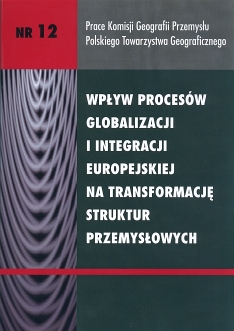Europejskie programy GNSS na rynku globalnych systemów nawigacyjnych
DOI:
https://doi.org/10.24917/20801653.12.10Słowa kluczowe:
GNSS, nawigacja,Abstrakt
The study includes the description of development conditions for the satellite navigation programme Galileo. Its also includes some aspects of the Galileo programme accomplishment, especially its influence on the integration process in Europe and tightening the international connections. The programme has been implemented since the 1990s and its aim is to ensure the independence of the EU countries in such sectors of their economy which are based on the precise information related to location and time. Galileo has also its overregional dimension, which is the result of satellite constellation and its global reach. It is the biggest industrial project conducted within the integrated European structures. What is more, the distinction of Galileo among other European satellite programmes has its roots in its crucial strategic significance rather than in technology or investment costs. So far, the cosmologic institutions have not been formally connected with the integrated European structures, and less importance has been attached to political aspects of their projects. The transformation of the Galileo programme is proceeding in the condition of potential incomes risk from the system work. The fiasco of public and private partnership establishments was the result of differences in estimating the risk of trade incomes and market development. In 2013 Galileo will be in its full operation process and first GPS III satellites will work, what is more, the high precision of this American system and other integrated GNSS systems will establish competition in terms of commercial and amateur aplications. Widening the cooperation between the EU countries and the USA implies many positive effects, such as creating the idea of a multi-system satellite scheme, the compatibility of Galileo and GPS receivers and, what follows, the increase of navigation precision and reduction of overall costs borne by the system owners.Downloads
Metrics
Bibliografia
Business in satellite navigation, 2005, Official brochure Directorate – General Energy and Transport, second edition, Brussels, ss. 36
Galileo at a cross-road: The implementation of the european GNSS programmes, 2007, Communication from the Commission to the European Parliament and the Council (COM 2007, 261), Brussels, ss. 18
General public survey on the European Galileo Programme, 2007, Citizen Survey, Flash EB Series, no 211, ss. 48
Knapińska A., 2007, Kosmos naszą specjalnością?, „Materiały Ministerstwa Nauki i Szkolnictwa Wyższego”, nr 4 (125)
Kobierzycka A., 2006, Małżeństwo z rozsądku, „Nawi”, nr 3 (13), s. 3–5
Kramarz P., Warcholik W., 2005, Od GPS do Galileo, „Konspekt”, nr 2 (23), s. 37–41
Progressing Galileo: Re-profiling the european GNSS programmes, 2007, Communication from the Commission to the European Parliament and the Council, (COM 2007, 534), Brussels, ss. 16
Regulation of the Commission to the European Parliament and the Council on the further implementation of the European satellite radionavigation programmes, 2007 (COM 2007, 535), Brussels, ss. 32
Taking stock of the Galileo programme, 2006, Communication from the Commission to the European Parliament and the Council (COM 2007, 272), Brussels, ss. 10
The current and future world-wide market for GNSS land and marine applications, 2006, Location – The portal on Positioning & Navigation, September – October, s. 1–3, (www.location.net.in)
Un système de positionnement; un enjeu stratégique scientifique technique, 2003, Académie de marine, Bureau des longitudes, Académie nationale de l’air et de l’espace, Paris, ss. 203
Pobrania
Opublikowane
Jak cytować
Numer
Dział
Licencja
Artykuły publikowane są zgodnie z warunkami licencji Creative Commons (CC BY-ND 4.0; uznanie autorstwa-bez utworów zależnych).

